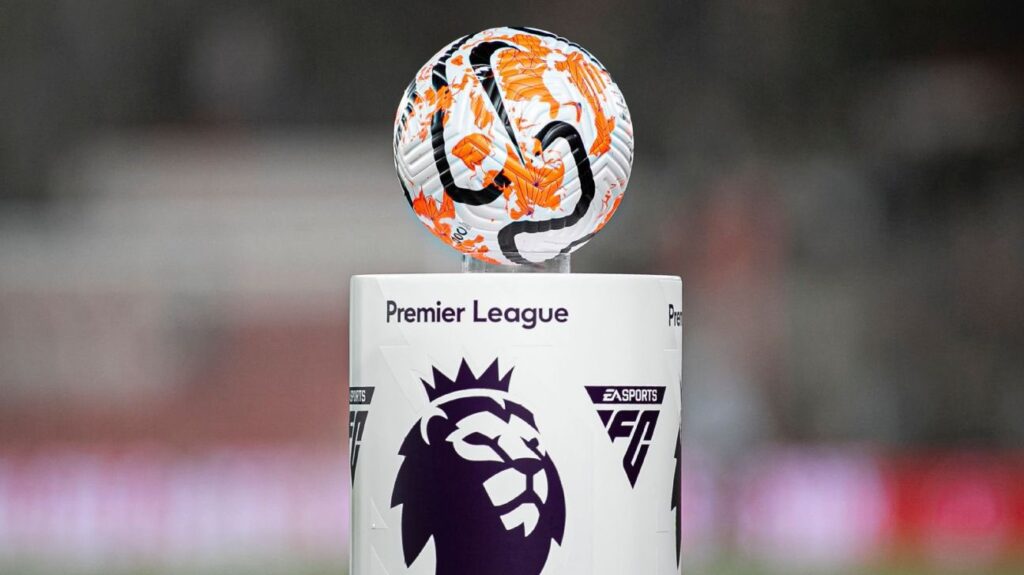Premier League is proposing the adoption of salary cap and anchoring ahead of the 2025-26 season.
That is what appears the next big move from the most prophesied league in the world as the English Football Association looks to amend the policy that sees club continuously breach the Financial Fair Play rules.
Looking at the current league standing, there are clubs that have been ducked points due to ilegalities. Everton and Nottingham Forest have falled victims so far.
While there are also pressure on the FA to look into the 115 charges of Manchester City. London club, Chelsea are also not a saint in the topic, and will soon be brought to book.
Premier League CEO Richard Masters has confirmed last week that the hearing into Manchester City’s 115 charges will take place in the “near future”. Stating that a date has been set already.
However, in a bid to limit the rate at which clubs fall victim of the rules, the Premier League clubs have voted for an effective salary cap.
What is Salary Cap and how does it work ?
In sports, a salary cap refers to a financial restriction imposed by a league or governing body on the total amount of money a team can spend on player salaries.
It is an instrument employed to promote financial fairness and competitive balance within the league by preventing wealthy clubs from outspending their rivals on player wages.
Salary caps are typically implemented to ensure that all teams operate within a similar budgetary framework, reducing the risk of financial disparities and fostering a more level playing field.
Once adopted, it becomes compulsory for clubs to adhere to the regulations when signing new players and managing their squad budgets throughout the season.
Leagues that have adopted the Salary Cap

Salary Cap is prevalent in North America. In the United States, sports like basketball, rugby, hockey, soccer, and others use the salary cap to ensure competitiveness of their leagues.
In Europe, other team sports aside football use the salary cap. Although it was proposed at the start of the 21st century, however, it did not materialize.
According to the BBC in 2002, a group of 18 leading European football teams would cap their payrolls at 70% of team’s income, starting from the 2005/2006 season, in the end, it never worked out.
Spanish top-flight league, the Laliga is the most famous football league in Europe that adopts and uses the salary cap. It has been in use in the league since 2013.
How does the LaLiga salary cap work ?
The Spanish Football Federation inserted a rule that prevents the top tier’s clubs from spending on wages more than 70% of their total incomes.
How does the Salary Cap work ?
The functionality of salary cap is defined by three phenomenon. The hard cap, soft cap and the salary floor. Understanding this three will help provide the needed basics into the salary cap.
The Hard Cap defines the maximum amount of money that a club can spend on their squad, be it on wages, transfers, agent fees and other management costs.
Should a club exceed this amount, penalties will be faced and it may include stripping of championships won while breaching salary cap rules. An example is Melbourne Storm of Australian Rugby league, NRL.
In 2010, the club was found guilty of breaching the salary cap strictly enforced by the league and that resulted in it being stripped of all honours won between 2006 and 2010.

Soft Cap is the amount that can be exceeded but in limited, and due to some circumstances. Should a club be guilty of breaching this cap, penalties to be faced is already known in advance, and it may include payment of fines and or deduction of points.
The third, salary floor is a minimum amount that must be spent on the team as a whole, and this is separate from the minimum player salary that is agreed to by the league.
Type of Salary Cap proposed by the Premier League
The salary cap is always different for each club as it is a function of what a club earns.The proposed salary cap will not be on individual players, i.e no amount will be fixed for maximum or minimum on what a club can pay for their players in wages.
However, it will directly affect the spending activities of club as a figure will be alloted to each club on what they can spend on squad cost.
It will then include amounts that can be spent on wages, transfers, and agent fees.
Anchoring cap is being considered at the moment and the FA will need 14 of the 20 Premier League clubs to agree to it, before it can be implemented.
How does the proposed “anchoring” works ?
The figure for each club is being discussed to be based on multiple of what the bottom club in the league earns in broadcasts revenues, currently £103.6 million.
So if the multiple for the spending cap is agreed at the proposed anchoring cap 4.5, then the revenue from broadcast for the bottom club in the league will be multiplied by this number, to arrive at the amount a club can spend.
This will mean each Premier League club will be allowed to spend not more than £466.2 million on transfers, wages and agent fees.

Why the Salary Cap and anchoring ?
This is employed to maintain a competitive league and fairness on the teams with lower budgets. For these reasons, smaller clubs will consider it a treat.
For clubs that do not generate much income outside broadcasting to also be competitive and have a fighting chance against their more financially endowed counterparts, fostering a more unpredictability of the league.
It also improves the stance of a club against breaching the financial fair play rules while also reducing the risk of mismanagement and bankruptcy.
Why would clubs vote against Anchoring ?
Teams with a good financial backing will obviously reject the proposed anchoring because it restricts them from spending the money they have, or earned.
For clubs looking to sign marque players, the anchoring is a threat to fulfilling their ambitions as it restricts them from agreeing to several demands that could surface during negotiations, which includes agent fee and players wages.
It also affects the wage structure of clubs with high wage bills and adoption could mean parting ways with some of their top earners, who are usually the best players in their squad.
Teams that have voted against Anchoring
Manchester clubs, City and United and Aston Villa are three clubs who at the moment disagree with the proposal.

Manchester United and City both have players on huge wage bills at the moment and will be significantly affected if the salary cap is implemented.
Manchester City will also debate the fact that they earn so much and have much to spend to maintain the standard they are keeping at their club. They could end up in the same situation as Barcelona, where club is left in deficit though they may have the money.
Chelsea reportedly abstained, so it leaves the 16 clubs potentially welcoming the idea when the final decision will be made in another meeting later in May.
Players that could be affected
Players of top clubs are definitely going to bear the brunt of the new development, if eventually adopted.
Marcus Rashford is on £300,000 per week at Manchester United and his performances has been below par this season. With a new management starting work, he could be forced to take a paycut or moved on.
Casemiro and Raphael Varane are most likely to be in their final seasons at the club, if not for performances and fitness again, then the salary cap has made it a necessity.

Gabriel Jesus of Arsenal has significantly dropped in the pecking order at the club following the integration of Kai Havertz as the main striker. It is no surprise that news is making rounds that the club will be opened to letting him go in the summer.
As a squad player, the Gunners would rethink having him around when he gets £265,000 per week. Thomas Partey could also be affected, with Jorginho already offered an extension.
It will be interesting to see if the salary cap will be adopted when the Premier League clubs meeting again, to discuss and finalize the deal ahead of the implementation in the 2025-26 season.


4 Comments
Pingback: January 19, 2025
GsSxRNZhEFyLWX
Pingback: May 20, 2024
They should implement it asap